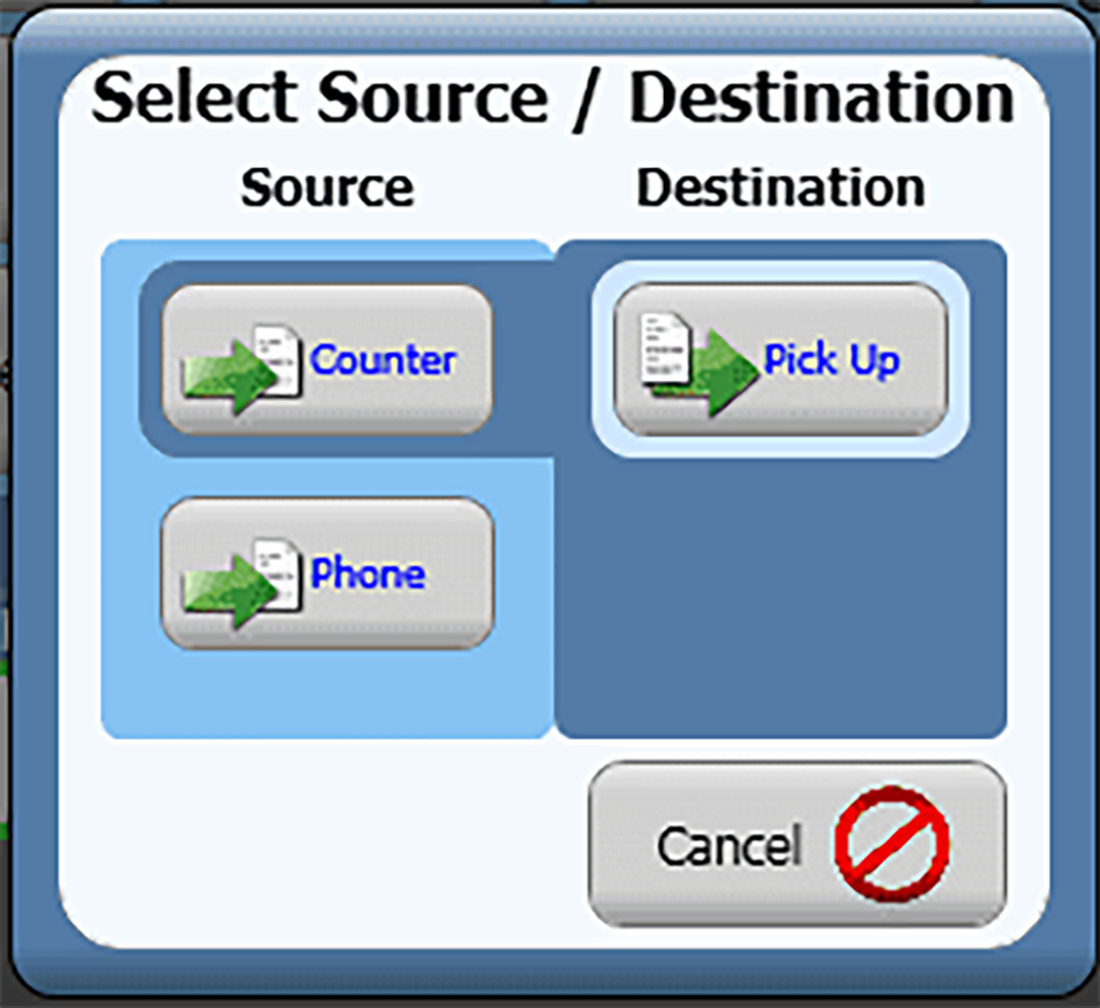Source and Destination
Core Product: Aloha Takeout
Complimentary Products: Aloha Quick Service, Aloha Table Service
Separate License Required? An Aloha Takeout and Delivery license is required.
Other References: Aloha Takeout Reference Guide, Aloha Takeout Implementation Guide
View/Download/Print: Source and Destination Feature Focus Guide - HKS380
In the current world of hospitality, there are many different options for placing and receiving orders, from calling the order in, placing the order using an app on your phone, logging in and placing an order through a web site, speaking directly to an employee at the counter, and using a delivery marketplace to act as an intermediary between you and the restaurant.
There are also many options for how you receive an order. You can elect to pick up your order, dine in at the restaurant, have the order delivered to your address, and more. You can even have them bring the order out to your car, such as in a car-hop environment.
The Source and Destination feature in Aloha Takeout (ATO) assists you in tracking how consumers submit and receive orders. When it comes to performance metrics, this is valuable data you can use to evaluate staffing needs, identify areas of the restaurant that are not profitable, and reconcile payments from delivery partners. Order source refers to how an order is placed, and order destination refers to how an order is received. When configured, the system prompts the ATO employee to specify from which source the order originated and to which destination the consumer will receive the order. The restaurant can then run a Source and Destination report.

Warning: As of ATO v19.x, you must define a Source and Destination record to address all order sources leveraged by an online ordering solution, such as a store website and a delivery marketplace. This enables the online ordering solution to inject orders into ATO. If this record does not exist, order injection fails. See "Appendix A: Configuring Source and Destination for online ordering injection only."
The Source and Destination feature was available for configuration in the BOH Radiant.Hospitality.AlohaToGo Configuration.UI prior to the migration of ATO into Aloha Configuration Center (CFC) and Aloha Manager (AM). You can now configure the Source and Destination feature using CFC or AM v19.1. Moving the configuration of Source and Destination to CFC/AM eliminates the need to perform extra steps to save and refresh data from the Radiant.Hospitality.AlohaToGo.Configuration.UI utility.
Note: These instructions teach you how to implement the Source and Destination feature within the configuration management tool. If you are not on a supported version of the configuration management tool, you must use the Radiant.Hospitality.AlohaToGo.Configuration.UI utility.
Configuring Source and Destination
This section details the configuration requirements within Aloha Manager and Aloha Configuration Center (CFC) for Source and Destination.
- Enabling Source and Destination
- Configuring the ability to change a source or destination
- Configuring source and destination to appear in ATO
- Configuring source and destination to appear in AK
- Refreshing POS data
Using Source and Destination
Learn how to use Source and Destination.
Tip: This section is not applicable if you are using Source and Destination for online ordering injection only.
Reporting Source and Destination
Discover the reports that help you manage group combos.
Appendix A: Configuring Source and Destination for online ordering injection only
As of ATO v19.x, you must define a Source and Destination record to address all order sources leveraged by an online ordering solution, such as a store website and a delivery marketplace. This enables the online ordering solution to inject orders into ATO. If this record does not exist, order injection fails.
Learn how to configure Source and Destination for online ordering injection only.